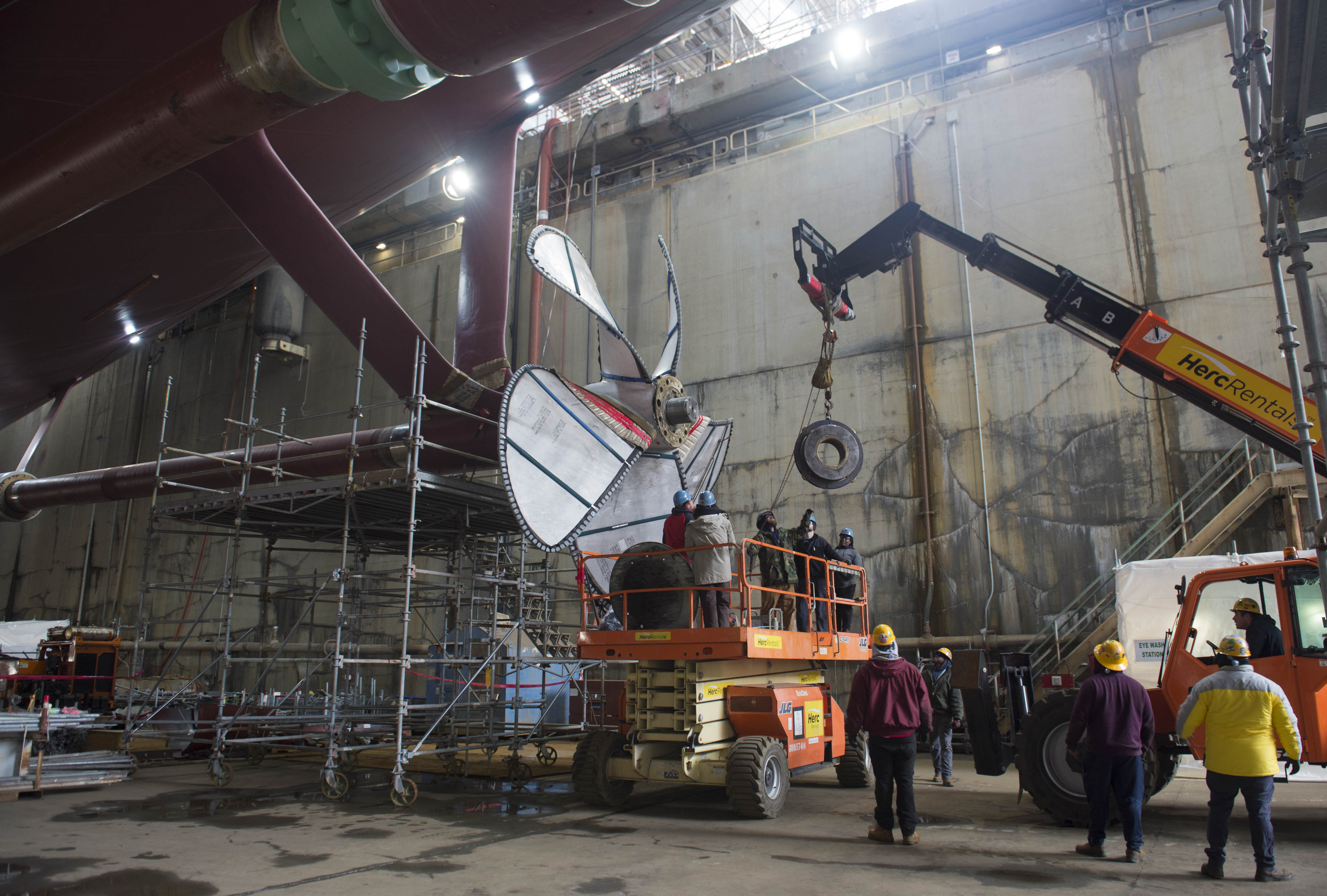
While capacity at the Navy’s shipyards has nearly returned to pre-COVID-19 rates, the service does not expect to have widespread testing available for workers until later this year.
Speaking at a virtual conference hosted by the American Society of Naval Engineers, Naval Sea Systems Commander Vice Adm. Bill Galinis said today that the service has “stabilized” its capacity levels, which are now slightly lower than they were prior to the COVID-19 pandemic.
“Back in the March-April timeframe, we saw clearly a significant drop in the number of folks that we were able to get into the shipyards and we had productively working. I think at this point – I feel like we’ve stabilized,” Galinis said. “We’re a little bit below maybe what we were back the end of 2019, early 2020, before we went into this situation. On average, the naval shipyards are operating – these are the production numbers now for the production workforce – the naval shipyards are operating at about 89 percent capacity.”
Still, asked when the Navy anticipates having widespread testing, Galinis said, “further, the end of this year – we’ll see.”
Throughout the four public Navy shipyards, the service currently has approximately 550 to 600 people who are under restriction of movement (ROM) guidance in accordance with COVID-19 protocol, Galinis said.
“We try to bring those back as quickly as possible. I know frankly the testing that’s available out there – the rapid response test – probably [is] not as accurate as we’d like,” Galinis said. “At least within on the naval shipyard side, we haven’t been able to be able to test out of a ROM period yet. So we’re still kind of working that.”
While the Navy has not been able to use rapid testing to move its shipyard workers out from a ROM, Galinis said the private yards, which are working at about 91 to 92 percent capacity, have used rapid testing to bring workers out of quarantine.
“Industry has already progressed in that area, where maybe they give them two or maybe even three tests over a period of a couple of days to get them back to work after a few days as opposed to the traditional 14-day ROM,” Galinis said. “I do think we’re going to get there with the rapid testing . . . I don’t think it’s going to be in the next few weeks or month or so, is just my sense, from what I’m seeing.”
As the COVID-19 pandemic led to widespread lockdowns and social distancing measures, the Navy in June brought in 1,629 reservists after capacity at the public yards dropped, USNI News previously reported. The reduced capacity at the yards worsened the Navy’s maintenance logjam for carriers and submarines.
The Navy currently has 47 chief of naval operations maintenance availabilities throughout the private shipyards, according to Galinis, who noted that three are submarines undergoing maintenance at Newport News Shipbuilding and the rest are scattered throughout various yards across the world.
“About half of those are tracking to the schedule and to the plan that we established for those availabilities,” Galinis said. “The other half — quite frankly — are challenged, some more than others, either by schedule pressures, cost pressures, resource loading, or a combination of those. So that’s the work going on in the private sector.”
One concern Galinis has is the potential for a team performing a “critical path job” having one member become infected, who then spreads COVID-19 to the rest of the team, a scenario that he said could throw the entire maintenance availability schedule out of whack despite only several individuals becoming sick.
Within the four public yards, the service has 11 submarine maintenance availabilities and two carrier availabilities, all of which Galinis said are facing some schedule risk.
“I would tell you at this point probably most of those, if not all, probably have some level of schedule pressure associated with those,” the NAVSEA chief said. “The pressures that I talked about – some related to the COVID environment that we’re in. Some may be due to other factors as I mentioned.”
While the Navy saw a brief drop in shipyard capacity after the Fourth of July holiday, Galinis said the service has not yet seen the same effect from the Labor Day weekend.
Despite the pandemic and the restrictions that have come with it, the NAVSEA chief emphasized the need for private shipyards to stick to their maintenance timelines.
“Again, on the private sector side, we really need to kind of maintain those schedules – fleet operations, fleet requirements have not changed,” he said. “Okay, and in fact, in some cases, I would tell you they’ve actually increased, so we really need to continue to work through that.”





